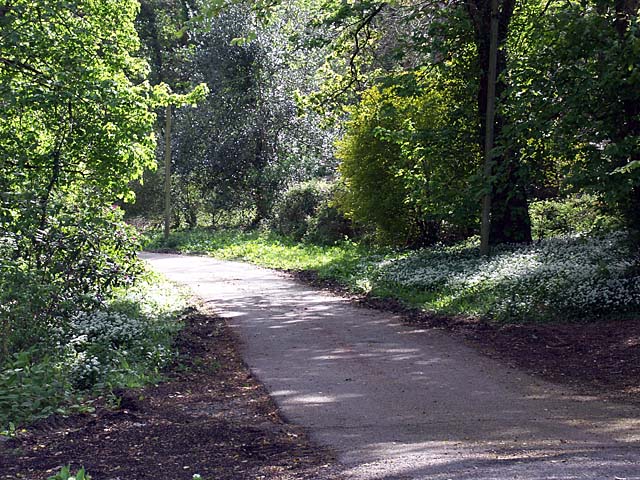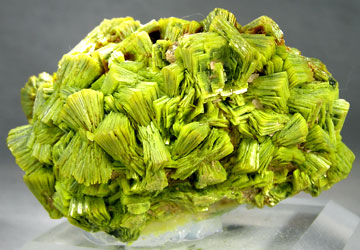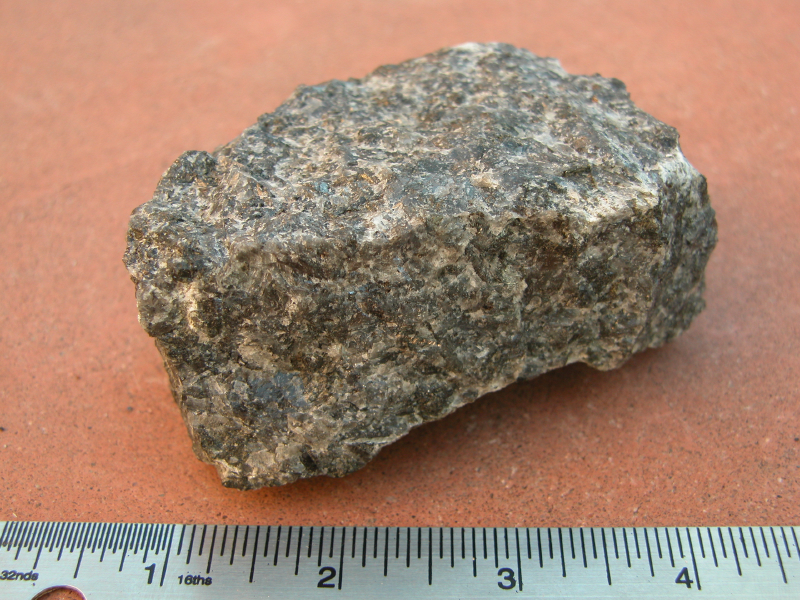|
William Gregor
William Gregor (25 December 1761 – 11 June 1817) was a British clergyman and mineralogist who discovered the elemental metal Titanium. Early years He was born at the Trewarthenick Estate in Cornwall, the son of Francis Gregor and Mary Copley and the brother of Francis Gregor, MP for Cornwall. He was educated at Bristol Grammar School, where he became interested in chemistry, then after two years with a private tutor entered St John's College, Cambridge, graduating BA in 1784 and MA in 1787. He was ordained in the Church of England. He became vicar of St Mary's Church Diptford near Totnes, Devon. He married Charlotte Anne Gwatkin in 1790 and they had one daughter, Charlotte-Anne Gregor. Discovery of titanium After a brief interval at Bratton Clovelly, in 1793 William and his family moved permanently to the rectory of Creed in Cornwall. Here he continued his remarkably accurate chemical analysis of minerals, most of which came from Cornwall, such as the zeolites found ... [...More Info...] [...Related Items...] OR: [Wikipedia] [Google] [Baidu] |
Trewarthenick
Trewarthenick () is a hamlet in the civil parish of Tregony in Cornwall, England, United Kingdom.Ordnance Survey ''One-inch Map of Great Britain; Truro and Falmouth, sheet 190''. 1961 Trewarthenick lies within the Cornwall Area of Outstanding Natural Beauty (AONB). Almost a third of Cornwall has AONB designation, with the same status and protection as a National Park. William Gregor, the discoverer of titanium, was born on the Trewarthenick Estate as was his brother Francis Gregor Francis Gregor (1 June 1760 – 12 July 1815) was an English landowner in Cornwall, Member of Parliament for the Cornwall county constituency from 1790 to 1806. Life Gregor was born on 1 June 1760 in Trewarthenick, Cornwall, the son of Cpt ..., MP for the County of Cornwall from 1790 to 1806. Map sources Map resources for Trewarthenick at References Hamlets in Cornwall {{Carrick-geo-stub ... [...More Info...] [...Related Items...] OR: [Wikipedia] [Google] [Baidu] |
Devon
Devon ( ; historically also known as Devonshire , ) is a ceremonial county in South West England. It is bordered by the Bristol Channel to the north, Somerset and Dorset to the east, the English Channel to the south, and Cornwall to the west. The city of Plymouth is the largest settlement, and the city of Exeter is the county town. The county has an area of and a population of 1,194,166. The largest settlements after Plymouth (264,695) are the city of Exeter (130,709) and the Seaside resort, seaside resorts of Torquay and Paignton, which have a combined population of 115,410. They all are located along the south coast, which is the most populous part of the county; Barnstaple (31,275) and Tiverton, Devon, Tiverton (22,291) are the largest towns in the north and centre respectively. For local government purposes Devon comprises a non-metropolitan county, with eight districts, and the Unitary authorities of England, unitary authority areas of Plymouth City Council, Plymouth an ... [...More Info...] [...Related Items...] OR: [Wikipedia] [Google] [Baidu] |
Lead
Lead () is a chemical element; it has Chemical symbol, symbol Pb (from Latin ) and atomic number 82. It is a Heavy metal (elements), heavy metal that is density, denser than most common materials. Lead is Mohs scale, soft and Ductility, malleable, and also has a relatively low melting point. When freshly cut, lead is a shiny gray with a hint of blue. It tarnishes to a dull gray color when exposed to air. Lead has the highest atomic number of any stable nuclide, stable element and three of its isotopes are endpoints of major nuclear decay chains of heavier elements. Lead is a relatively unreactive post-transition metal. Its weak metallic character is illustrated by its Amphoterism, amphoteric nature; lead and lead oxides react with acids and base (chemistry), bases, and it tends to form covalent bonds. Lead compounds, Compounds of lead are usually found in the +2 oxidation state rather than the +4 state common with lighter members of the carbon group. Exceptions are mostly limited ... [...More Info...] [...Related Items...] OR: [Wikipedia] [Google] [Baidu] |
Scorodite
Scorodite is a common hydrated iron arsenate mineral, with the chemical formula FeAsO4·2H2O. It is found in hydrothermal deposits and as a secondary mineral in gossans worldwide. Scorodite weathers to limonite. Scorodite was discovered in Schwarzenberg, Saxony, Germany. Named from the Greek Greek may refer to: Anything of, from, or related to Greece, a country in Southern Europe: *Greeks, an ethnic group *Greek language, a branch of the Indo-European language family **Proto-Greek language, the assumed last common ancestor of all kno ... ''Scorodion'', "garlicky". When heated it smells of garlic, which gives it the name. References Further reading * Palache, C., H. Berman, and C. Frondel (1951) Dana's system of mineralogy, (7th edition), v. II, pp. 763–767 External links Webmineral data [...More Info...] [...Related Items...] OR: [Wikipedia] [Google] [Baidu] |
Autunite
Autunite (hydrated calcium uranyl phosphate), with formula Ca(UO2)2(PO4)2·10–12H2O, is a yellow-greenish fluorescent phosphate mineral with a hardness of 2–. Autunite crystallizes in the orthorhombic system and often occurs as tabular square crystals, commonly in small crusts or in fan-like masses. Due to the moderate uranium content of 48.27% it is radioactive and also used as uranium ore. Autunite fluoresces bright green to lime green under UV light. The mineral is also called calco-uranite, but this name is rarely used and effectively outdated. Autunite was discovered in 1852 near Autun, France, which is also autunite's namesake. It occurs as an oxidation product of uranium minerals in granite pegmatites and hydrothermal deposits. Associate minerals include metaautunite, torbernite, phosphuranylite, saleeite, uranophane and sabugalite. Etymology Autunite was named after the town of Autun, France, where the mineral was initially found. The mineral was named by He ... [...More Info...] [...Related Items...] OR: [Wikipedia] [Google] [Baidu] |
Torbernite
Torbernite, also known as chalcolite, is a relatively common mineral with the chemical formula Cu UO2)(PO4)sub>2(H2O)12. It is a radioactive, hydrated green copper uranyl phosphate, found in granites and other uranium-bearing deposits as a secondary mineral. The chemical formula of torbernite is similar to that of autunite in which a Cu2+ cation replaces a Ca2+ cation. Torbernite tends to dehydrate to metatorbernite with the sum formula Cu UO2)(PO4)sub>2(H2O)8. Etymology and history Torbernite was found for the first time at Georg Wagsfort Mine near Johanngeorgenstadt in the Ore Mountains in Saxony. It was first mentioned in 1772 by Ignaz von Born in his work ''Lythophylacium Bornianum'', calling it "mica viridis crystallina, ibid." (green crystalline mica from Johanngeorgenstadt, Sax.; ''ibid.'' = "as the item above"). In 1780 Abraham Gottlob Werner uses Born's work and describes the mineral in more detail, calling it at first "grüner Glimmer" (green mica), later ... [...More Info...] [...Related Items...] OR: [Wikipedia] [Google] [Baidu] |
Uranium
Uranium is a chemical element; it has chemical symbol, symbol U and atomic number 92. It is a silvery-grey metal in the actinide series of the periodic table. A uranium atom has 92 protons and 92 electrons, of which 6 are valence electrons. Uranium radioactive decay, radioactively decays, usually by emitting an alpha particle. The half-life of this decay varies between 159,200 and 4.5 billion years for different isotopes of uranium, isotopes, making them useful for dating the age of the Earth. The most common isotopes in natural uranium are uranium-238 (which has 146 neutrons and accounts for over 99% of uranium on Earth) and uranium-235 (which has 143 neutrons). Uranium has the highest atomic weight of the primordial nuclide, primordially occurring elements. Its density is about 70% higher than that of lead and slightly lower than that of gold or tungsten. It occurs naturally in low concentrations of a few Parts-per notation#Parts-per expressions, parts per million in soil, ... [...More Info...] [...Related Items...] OR: [Wikipedia] [Google] [Baidu] |
Tourmaline
Tourmaline ( ) is a crystalline silicate mineral, silicate mineral group in which boron is chemical compound, compounded with chemical element, elements such as aluminium, iron, magnesium, sodium, lithium, or potassium. This gemstone comes in a wide variety of colors. The name is derived from the Sinhala language, Sinhalese (), which refers to the carnelian gemstones. History Brightly colored Ceylonese gem tourmalines were brought to Europe in great quantities by the Dutch East India Company to satisfy a demand for curiosities and gems. Tourmaline was sometimes called the "Ceylonese Magnet" because it could attract and then repel hot ashes due to its Pyroelectricity, pyroelectric properties. Tourmalines were used by chemists in the 19th century to Polarization (waves), polarize light by shining rays onto a cut and polished surface of the gem. Species and varieties Commonly encountered species and varieties of tourmaline include the following: * Schorl species ** Brownish ... [...More Info...] [...Related Items...] OR: [Wikipedia] [Google] [Baidu] |
Wavellite
Wavellite is an aluminium basic phosphate mineral with formula aluminium, Al3(phosphorus, Poxygen, O4)2(Ohydrogen, H, fluorine, F)3·5water, H2O. Distinct crystals are rare, and it normally occurs as translucent green radial or spherical clusters. Discovery and occurrence Wavellite was first described in 1805 for an occurrence at High Down, Filleigh, Devon, England and named by William Babington in 1805 in honor of Dr. William Wavell (1750–1829), a Devon-based physician, botanist, historian, and naturalist, who brought the mineral to the attention of fellow mineralogists.Curtis, Samuel and Hooker, William Jackson (1827). Memoirs of the Life and Writing of the Late Mr. William Curtis, Curtis's Botanical Magazine; or Flower Garden Displayed, v. 1 (new series), v-xxxii. It occurs in association with crandallite and variscite in fractures in aluminium, aluminous metamorphic rock, in hydrothermal regions and in phosphate rock deposits. It is found in a wide variety of locations, ... [...More Info...] [...Related Items...] OR: [Wikipedia] [Google] [Baidu] |
The Lizard
The Lizard () is a peninsula in southern Cornwall, England, United Kingdom. The southernmost point of the British mainland is near Lizard Point at SW 701115; The Lizard, also known as Lizard village, is the most southerly region on the British mainland, and is in the civil parish of Landewednack. The valleys of the Helford River, and the lake known as Loe Pool form the northern boundary, with the rest of the peninsula surrounded by sea. The area measures about . The Lizard is one of England's natural regions and has been designated as a National Character Area 157 by Natural England. The peninsula is known for its geology and for its rare plants and lies within the Cornwall National Landscape, an Area of Outstanding Natural Beauty (AONB), also known as a ''National Landscape''. The Lizard's coast is particularly hazardous to shipping and the seaways round the peninsula were historically known as the "Graveyard of Ships". The Lizard Lighthouse was built at Lizard ... [...More Info...] [...Related Items...] OR: [Wikipedia] [Google] [Baidu] |
Gabbro
Gabbro ( ) is a phaneritic (coarse-grained and magnesium- and iron-rich), mafic intrusive igneous rock formed from the slow cooling magma into a holocrystalline mass deep beneath the Earth's surface. Slow-cooling, coarse-grained gabbro is chemically equivalent to rapid-cooling, fine-grained basalt. Much of the Earth's oceanic crust is made of gabbro, formed at mid-ocean ridges. Gabbro is also found as plutons associated with continental volcanism. Due to its variant nature, the term ''gabbro'' may be applied loosely to a wide range of intrusive rocks, many of which are merely "gabbroic". By rough analogy, gabbro is to basalt as granite is to rhyolite. Etymology The term "gabbro" was used in the 1760s to name a set of rock types that were found in the ophiolites of the Apennine Mountains in Italy. It was named after Gabbro, a hamlet near Rosignano Marittimo in Tuscany. Then, in 1809, the German geologist Christian Leopold von Buch used the term more restrictively in his d ... [...More Info...] [...Related Items...] OR: [Wikipedia] [Google] [Baidu] |
Zeolites
Zeolites are a group of several Microporous material, microporous, crystalline aluminosilicate minerals commonly used as commercial adsorption, adsorbents and Catalysis, catalysts. They mainly consist of silicon, aluminium, oxygen, and have the general formula ・y where is either a metal ion or H+. The term was originally coined in 1756 by Sweden, Swedish mineralogy, mineralogist Axel Fredrik Cronstedt, who observed that rapidly heating a material, believed to have been stilbite, produced large amounts of steam from water that had been Adsorption, adsorbed by the material. Based on this, he called the material ''zeolite'', from the Greek language, Greek , meaning "to boil" and , meaning "stone". Zeolites occur naturally, but are also produced industrially on a large scale. , 253 unique zeolite frameworks have been identified, and over 40 naturally occurring zeolite frameworks are known. Every new zeolite structure that is obtained is examined by the International Zeolite Associa ... [...More Info...] [...Related Items...] OR: [Wikipedia] [Google] [Baidu] |







